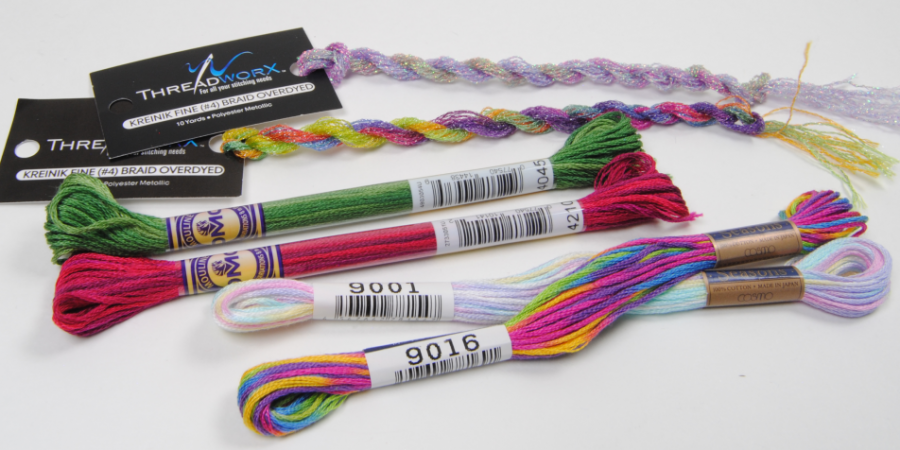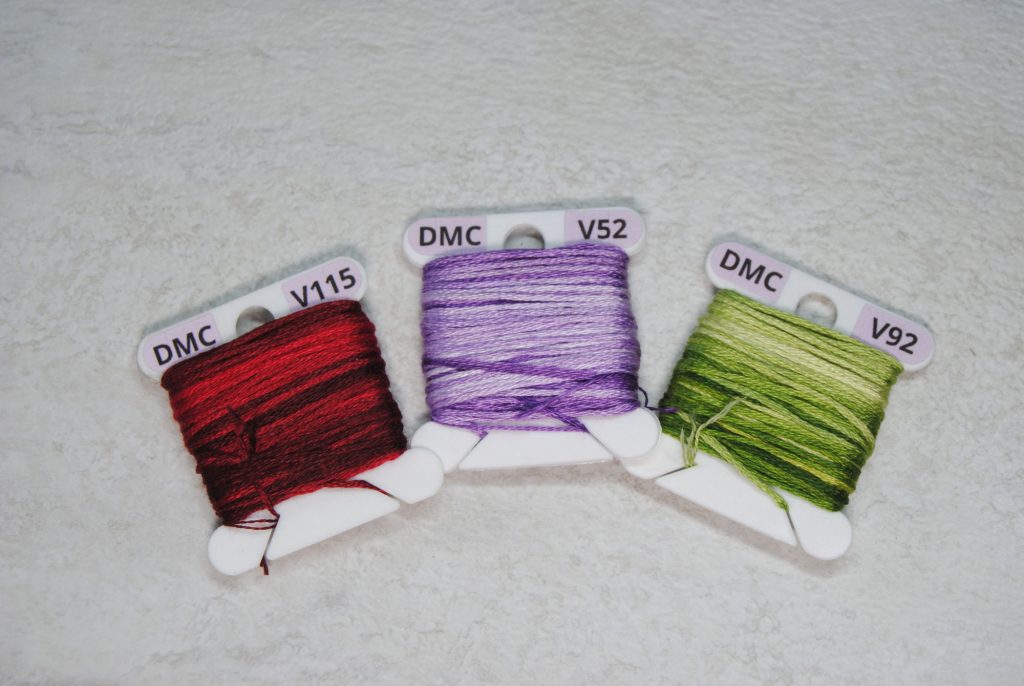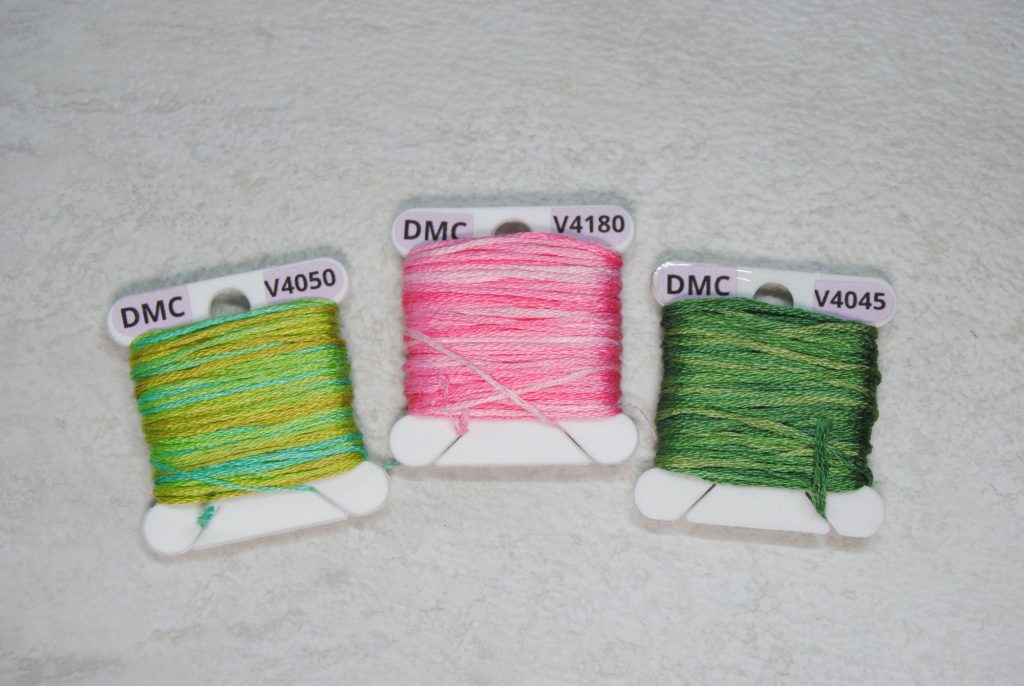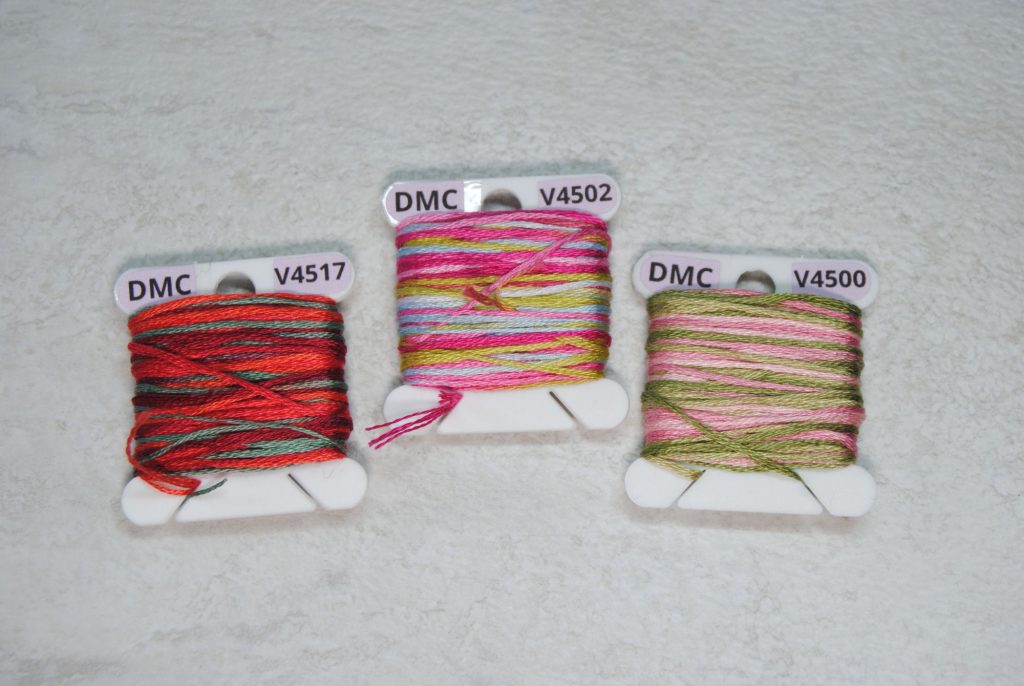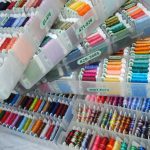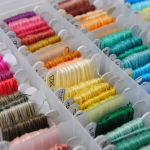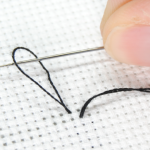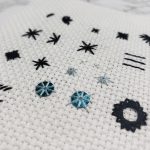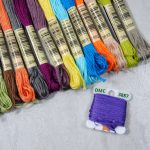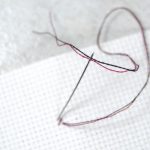It’s no secret that I love working with variegated thread. But for many, multicolor floss can seem quite daunting. What should you use it on? How to make it look the best? What if it doesn’t turn out how you thought it would?
With as many questions as I get on the topic, I figured it’d be good to go over what I have learned from my experiences working on it. Here we’ll go over where to get variegated threads, how to stitch with it, and what kinds of patterns it is most useful for.
This post may contain affiliate links. If you buy something using one of these links, I earn a small commission. However, there is no extra cost to you. Thanks for understanding! Learn more in my Disclosures & Privacy Policy.
As always, feel free to ask more questions on the Pixel Stitch Discord, or on my Twitter/Instagram and I’ll do my best to answer them!
Table of Contents
What is Variegated Thread?
The word ‘variegated’ itself simply means “exhibiting different colors, especially as irregular patches or streaks.” In this context, variegated thread is floss that has been dyed with more than just the one plain color like you may be used to.
This can range from just one or two lighter and darker variations of the same color, to a complete rainbow of colors.
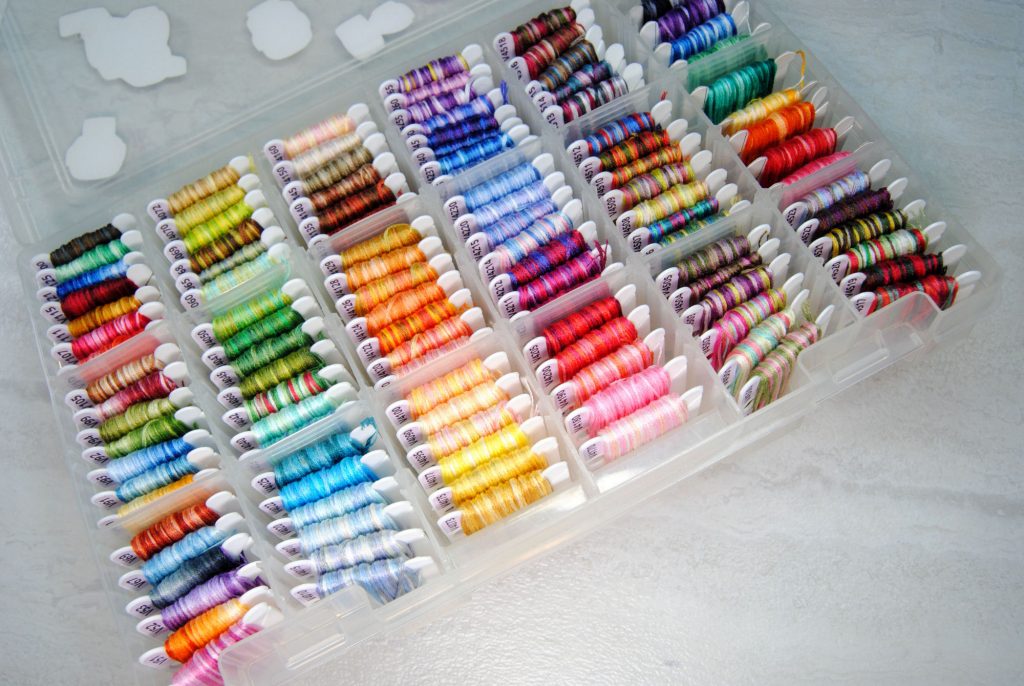
They’re absolutely gorgeous to look at but can be rather daunting when it comes to working with. It sometimes feels like they should be used for something “special”; but really they can be incorporated into any pattern you want. But we’ll go over that later; for now let’s talk about how to get your hands on these beauties.
What brands offer variegated thread?
Most places that sell cross stitch supplies will have some options for you. But the mainstream shops may only carry the DMC lines. So let’s discuss the options.
DMC
Even within the DMC line there are different sets of variegated thread.
There’s the original variegated thread range, numbered from 48-125. These are mostly 3-4 shades of a single color from light to dark. I believe these were discontinued, but can still be found at various shops
There’s the color variations line, which is the 4000’s. They tend to stay in the same color family, but with some hue shifting. One might go from a blueish green to a yellowish green, for example. This makes for much more vibrant colors.
Lastly, they also have the Coloris line. these typically have 4 colors that are pretty different from each other. For example, going from a yellow to pink to brown and then to green.
We’ll use all three of these types when I stitch up some examples. But for now just keep in mind there’s different styles of variegated thread.
Cosmo Seasons
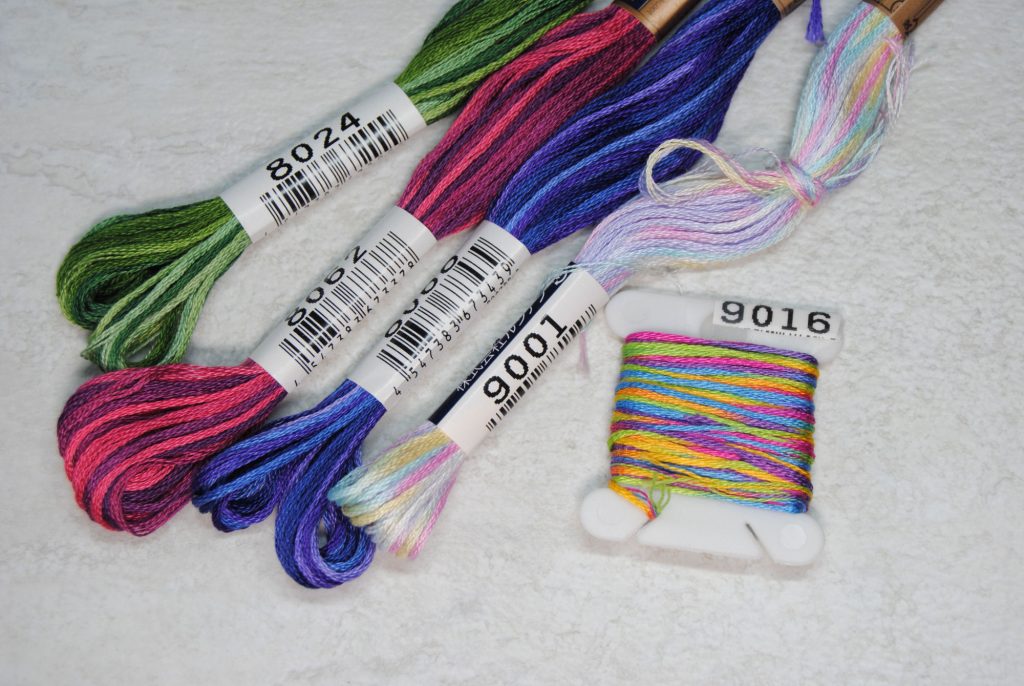
Lecien’s Cosmo Seasons line is another great choice for variegated threads that are produced consistently. They too are split into three styles of variegation, with a simple numbering system.
5000’s – Standard color variations with changes every 8cm/3.14″;
8000’s – Slower color changes, only occurring every 30cm/11.8″
9000’s – Quick short color changes of random lengths, with a wide variety of colors.
The 8000’s are similar in range to DMC’s color variations line. But in my opinion much more vibrant and eye catching. Below you can see comparisons of two similar DMC and Cosmo colors side by side. While they’re clearly going for a similar range of colors, the higher saturation of the Cosmo seasons thread make them stand out more.
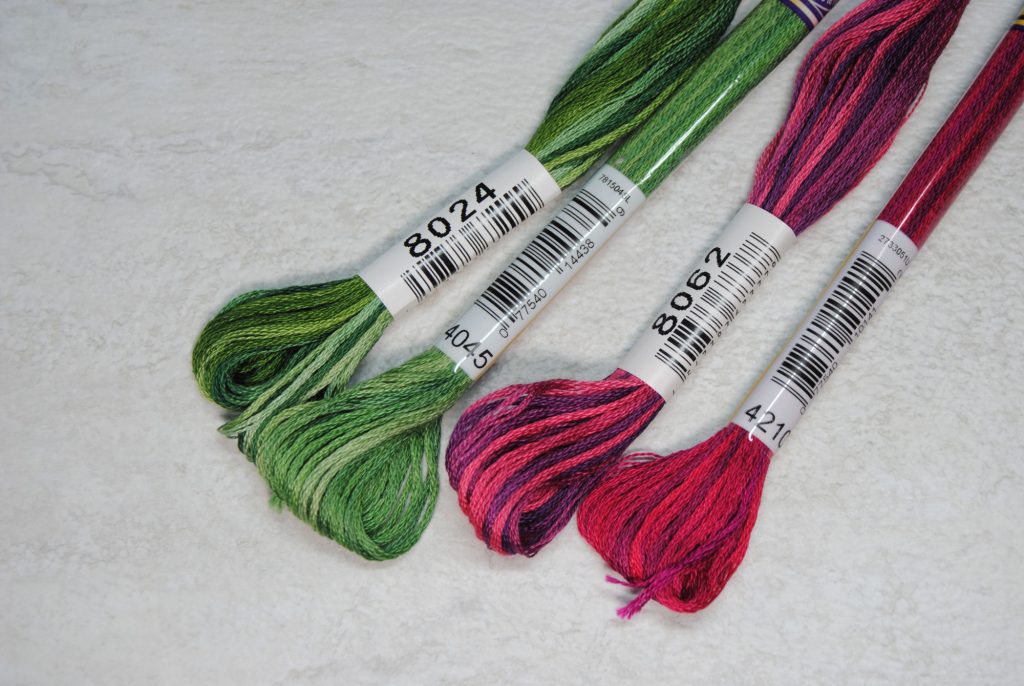
Lecien also offers some metallic variegated threads within their Nishikiito line!
You can find out more about Lecien Cosmo & Nishikiito in the review I did in 2020!
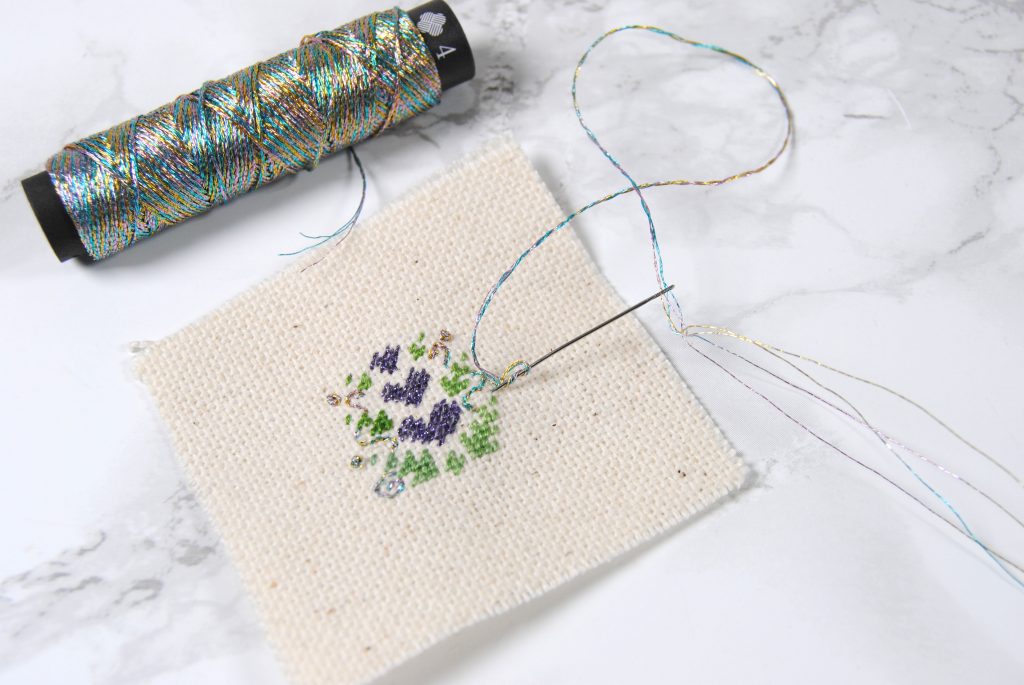
Anchor
Anchor is another major brand, that you’ve probably heard of. Especially if you’re over in Europe. They too have a few color variations lines.
They offer ‘ombre’ colors 1201-1220 that tend to stay to shades of the same color.
And a ‘multicolor’ line 1300-1390 that are much more varied in color choices
Though the 1300-1390 lines have apparently been discontinued? You can find some replacement suggestions here.
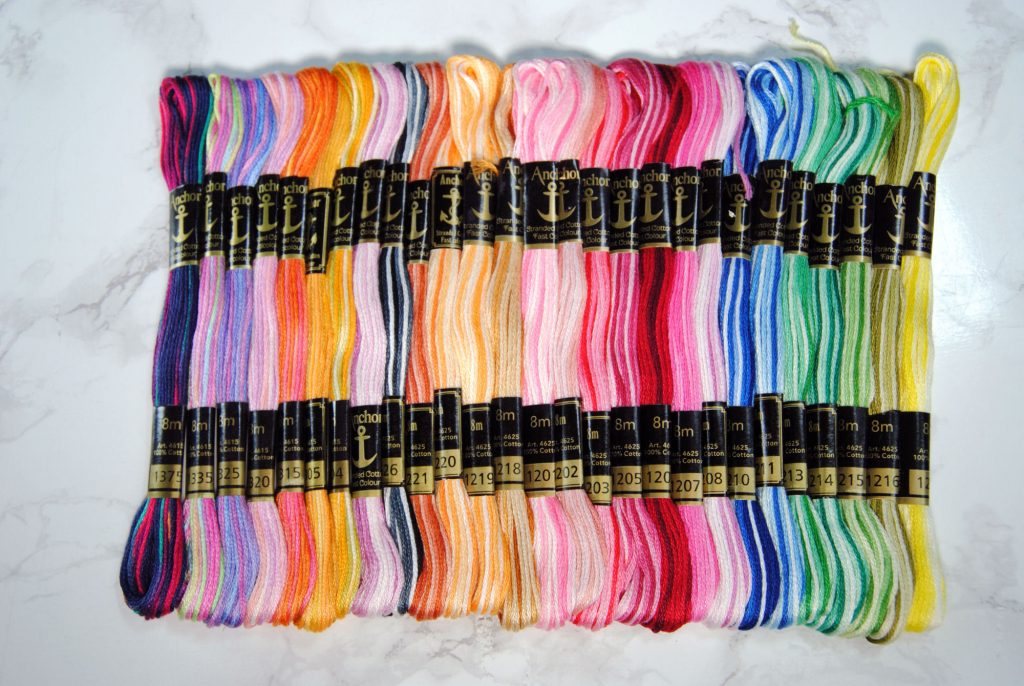
You can also find some Anchor threads made in India. Like the ones I have pictured here. They seem to be pretty close in colors to the originals. They’re both manufactured by Coats, just one is in India. And due to different locations may have slightly different dye lots than the current batches coming from Hungary. But no different than normal dye lot changes.
That said, when working with variegated it doesn’t matter as much if the color matches exactly anyway. Since that’s kinda the whole point. Your mileage may vary. But I needed some way to get my hands on that discontinued 1375. Look at it! And it was definitely cheaper than importing from Europe, so… I won’t judge if you don’t.
Sulky
I’ve also covered Sulky Threads here on the site before, so it’ll come to no surprise that I’m listing it here as well. The Sulky 12 wt Cotton Blendables are perfect for cross stitch; especially on 16 count and up. They’re about the thickness of two strands of DMC, and it’s kinda nice to not have to split threads while stitching.
They do also offer variegated metallics in their holoshimmer line, though that thread is more like a blending filament you’d have to mix in with your cotton thread. Unless you’re working on higher counts or just using it for backstitch, of course!
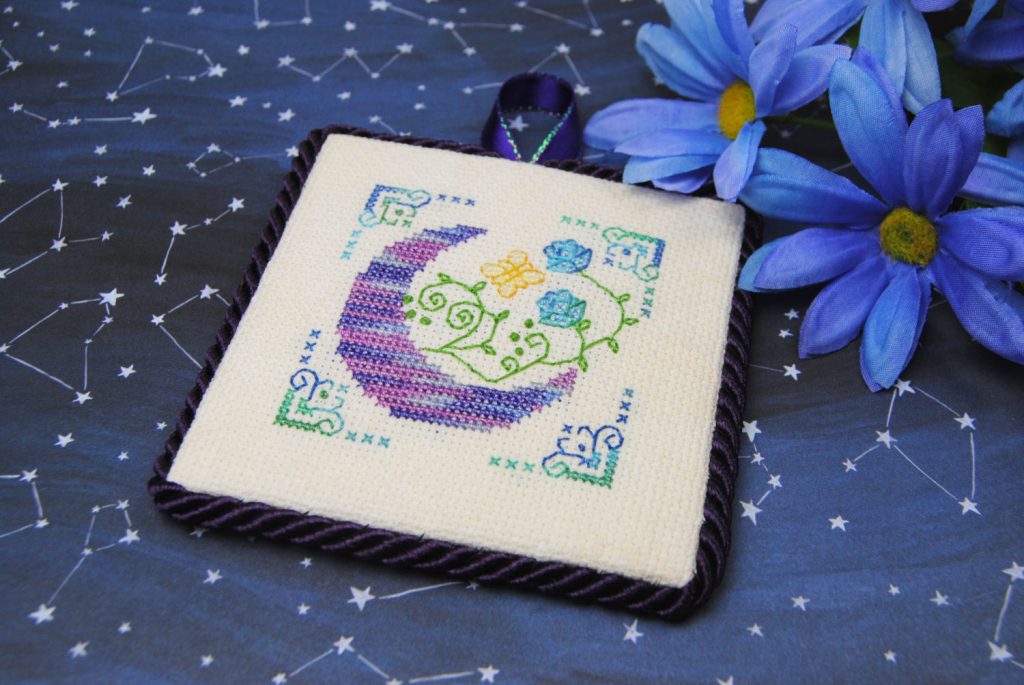
Hand Dyed Brands
There’s lots of other brands of variegated threads, mainly hand dyed brands. I haven’t worked with these much, but they’re definitely worth a look!
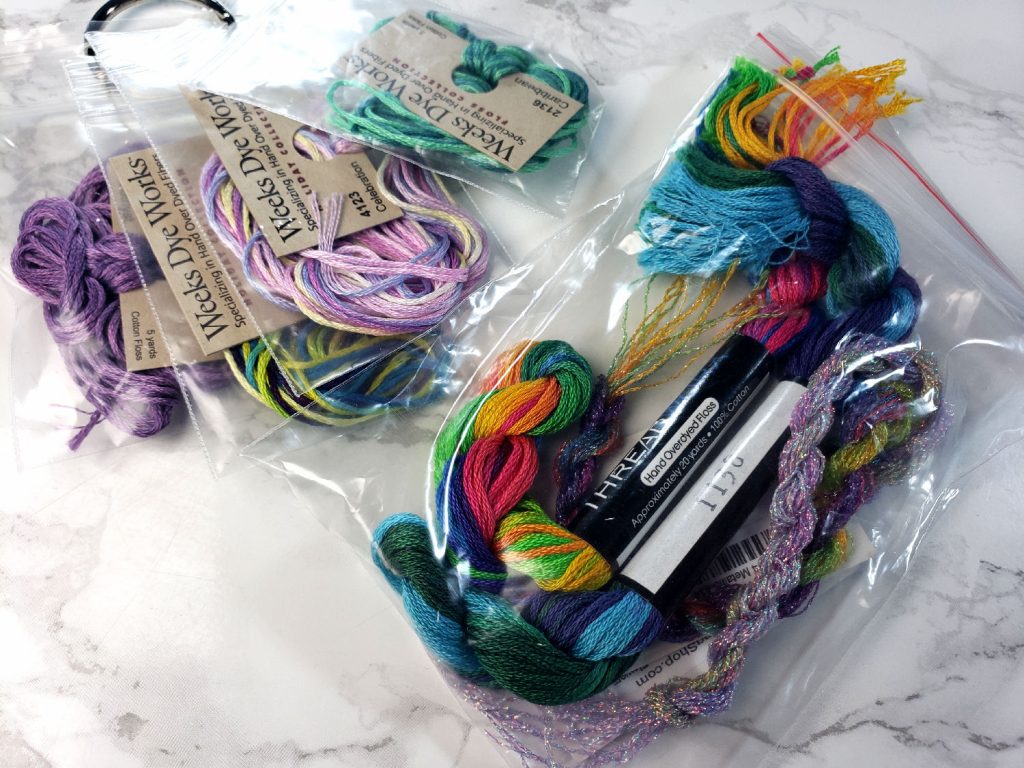
ThreadWorx – Both cottons and metallics!
Classic Colorworks (Formerly Crescent Color)
And probably dozens if not hundreds of independent artists that offer hand dyed threads. Have a look at Etsy or your favorite local needlework shop and see what you can find!
Concerns when working with Variegated thread
Cost – likely to be more expensive, especially when working with hand dyed. Even the mass produced DMC lines are typically $1.54 USD a skein compared to their $0.99 USD for standard cottons.
Put in the actual manual labor used to hand dye unique batches of threads and it can get pricy fast. But man is it well worth it. (Plus you’re supporting small businesses!)
Dye lots – These are a problem among solid colors, let alone thread that is using 4 different colors at once!
This is especially true for those smaller businesses, as the lots will be much smaller. Basically, this means your colors may be slightly different every time you order, no matter how well kept their recipes are. It’s best to order a bunch at once if you’ll be using them for a larger pattern. (and specifically requesting same dye lot, if possible!)
Colorfastness – This really depends on brand. Major brands are likely colorfast. But independent artists may not be. (Though I’ve had DMC bleed on me before, too!) Overdyed threads can react differently so be VERY careful and test your thread before washing or ironing to make sure they won’t bleed! If you don’t often wash or iron your stitches though, you’ll be fine. Probably.
Working with Variegated thread
Ok so you’ve picked up some pretty floss — now what? What do I stitch with it? HOW do I stitch with it? Keep reading, and I’ll try to answer those questions. Ultimately, it is up to you. But I can give you my tips and how I decide when to use my variegated threads.
Types of patterns that are good for variegated thread
Most common question I get is what kind of pattern to use it on? The obvious answer is a pattern designed for variegated thread. But you can use it on ANY pattern, really. Let’s discuss some common styles though
Text-Based Patterns
Probably the most common use for variegated thread that I’ve seen — text! Especially nice bold fonts so you can really see the change in colors within each letter. Now, I don’t do text based patterns much (I find them kinda boring to stitch), but they’re super popular. So you’ll find all sorts out there. Just swap in a colorful thread instead of that plain black, and you’re good. I highly recommend ShitpostSampler for all sorts of clever text based patterns that are super variegated friendly!
Silhouettes
The next common type of patterns that work well with variegation are silhouette type patterns. Aka, patterns made of just one or two “colors” to make the general shape of a symbol, or the silhouette of an iconic character. For example, I did a set of the Final Fantasy Crystal Chronicles crests for the release of the remastered version. And I ended up stitching them all with coloris thread. Just like text, these work well with the subtle variegation just as well as the bright colorful ones.
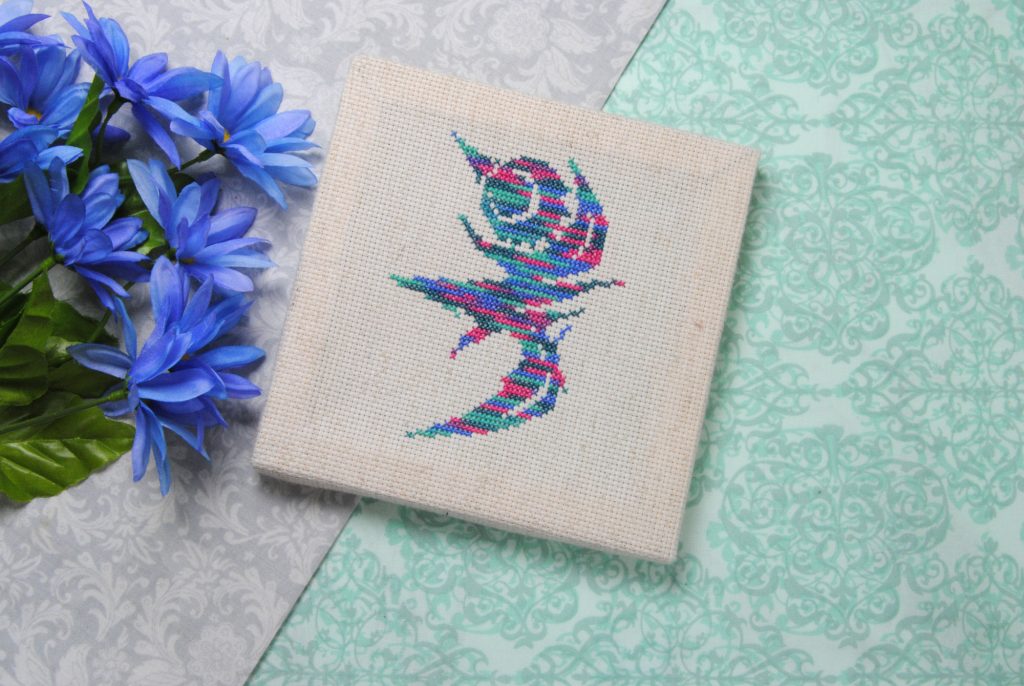
Blackwork
Not technically cross stitch, but has a lot of overlap with the cross stitch community. There’s plenty of patterns out there that incorporate both cross stitch and blackwork into a design. Although it’s called blackwork and traditionally done in black, it can have absolutely stunning effects using variegated thread. The example below is a pattern I purchased from StormsStitches that will eventually become a needlebook. The Cosmo Seasons 9016 I used really POPS on that black fabric!
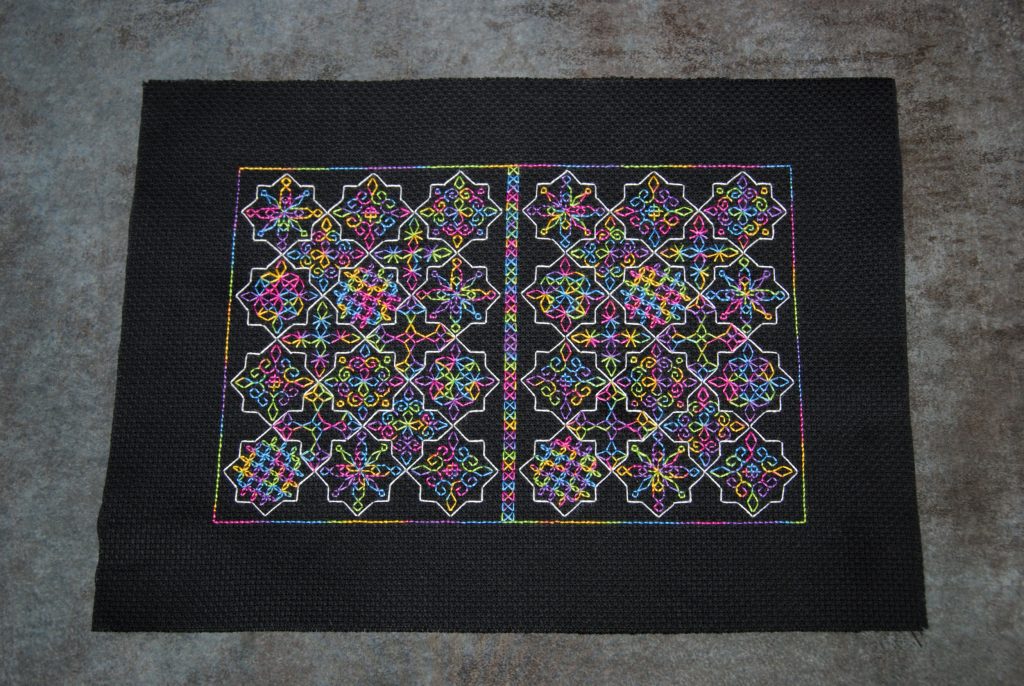
Borders
Designs with borders are pretty common as well. And often they overlap with the text-based ones I discussed above. But a lot of time these repeating borders make for a fun use of variegated thread. These tend to be better for subtle variegation as you don’t typically want to draw too much attention away from the main focus of the piece.
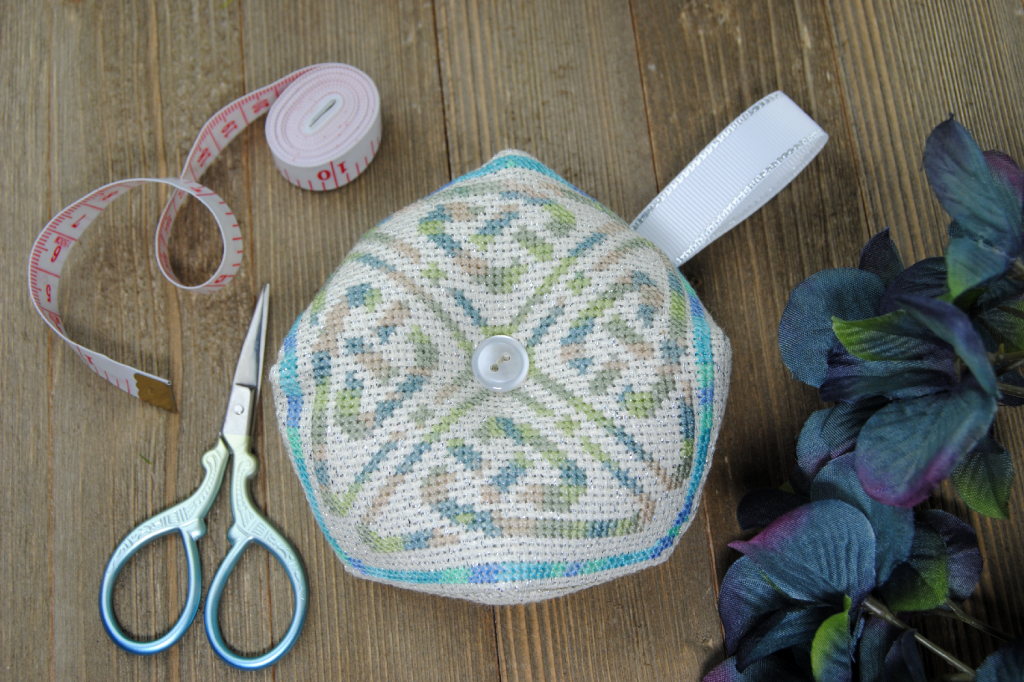
This example is a free design by Ink Circles. Designs like Ink Circles‘ knotwork designs work really well with variegated thread, especially when you stitch following the knotwork design as you go. But also I stitched the border in a different color of varigated thread.
Small motifs
Sometimes larger or elaborate designs have smaller motifs within them. A character might be holding a small item, a dress might have a pattern on it. The background might have plants or flowers. A shelf with a potion on it might have variegated ‘liquid’ inside it. These types of small items are great for subtle varigation.
For example, for Artfight this year I did some cross stitch attacks. This cute crabbit had an iridescent shell. So to get that effect, I used the pastel rainbow cosmo seasons 9001 thread. It makes for a really cool effect.
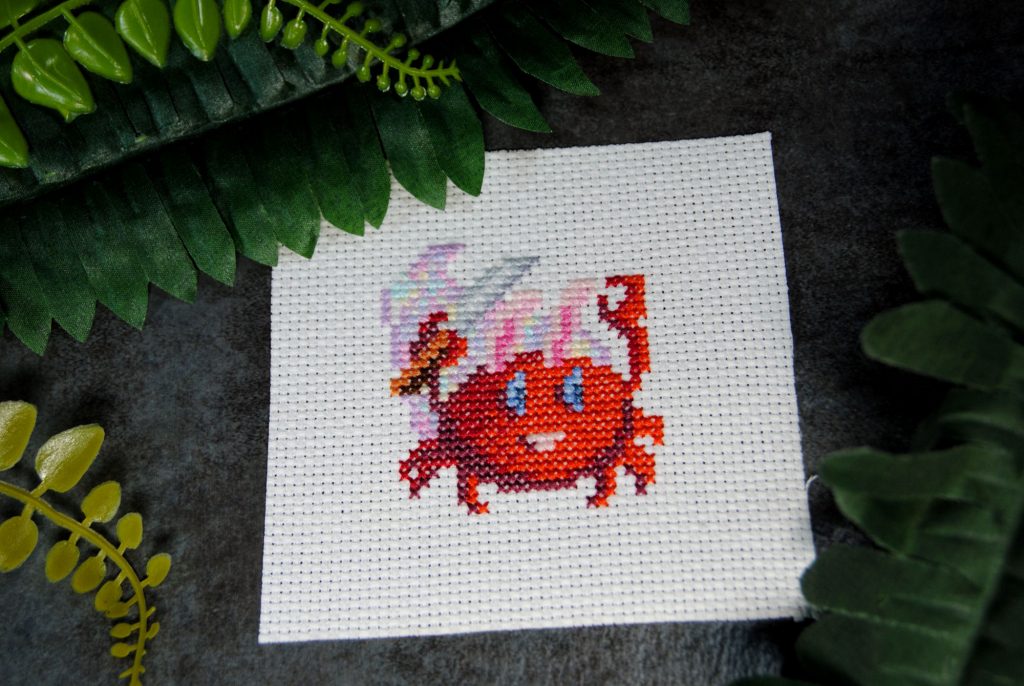
As another example, if I hadn’t done this Hollow Knight pattern on hand dyed fabric, I probably would have used variegated greens for the ‘background’ foliage. Or perhaps a dark blue variegation for the shadows in the stone, to give it texture.
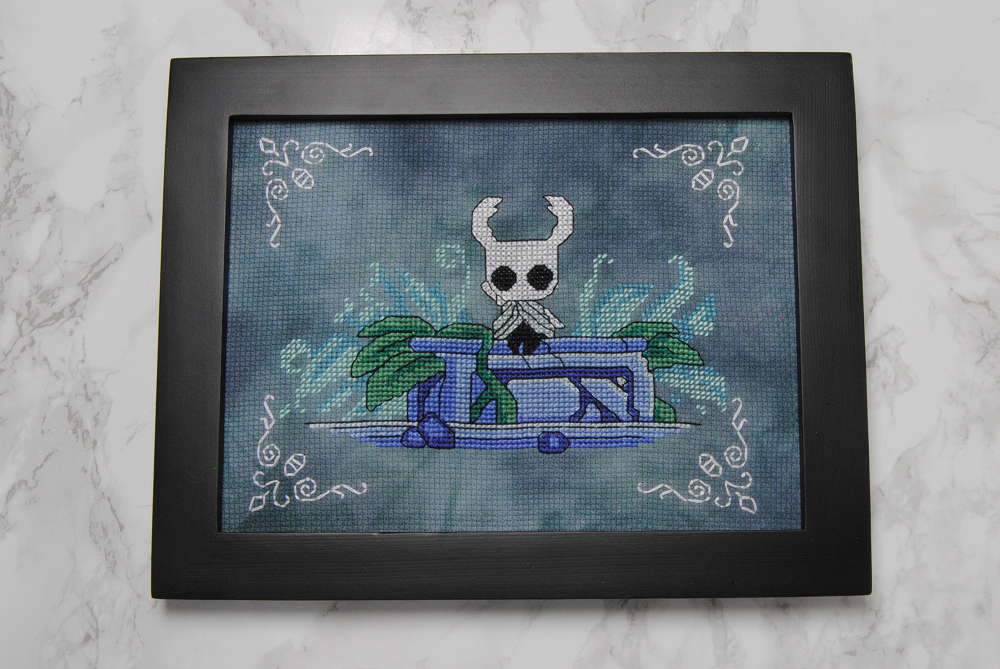
The point is, you don’t have to do the whole pattern. You can just do individual parts you think would benefit from some texture so it doesn’t seem as flat.
How to stitch with Variegated Thread
Now that you’re ready to start stitching, there’s a few more things to consider – the path you take while stitching, and the technique.
Stitch Techniques – English vs Danish
If you’re not familiar with these techniques, here’s the summary: with the English method you stitch one whole stitch at a time. With Danish, you’re stitching a whole row of half stitches, and then rounding back to cross the stitches.
With solid colors, you can’t really tell how a stitch is done unless you look at the back. But with variegated thread, it’s much easier to tell, depending on how often your thread changes colors. If you’re using the danish method it means more likely than not the top of your stitch will be a different color than the bottom leg. Now that could be what you’re going for, or it may not be! It’s just important to know the difference.
Most people will recommend using English method to really show off the color changes.
Stitch order – Controlling the look of the variegation
One of the main ways to manipulate how your piece turns out is deciding what path to take with your stitches. Especially if it’s a big silhouette area. This is easier to show than explain, so here’s an example. I stitched this adorable Metroid pattern by ZinThings using DMC Coloris threads.
From left to right, I stitched using the following methods:
- Diagonally (English method)
- Horizontal Rows (English method)
- Spiral (English method)
- Columns (English method)
- Rows (Danish method)
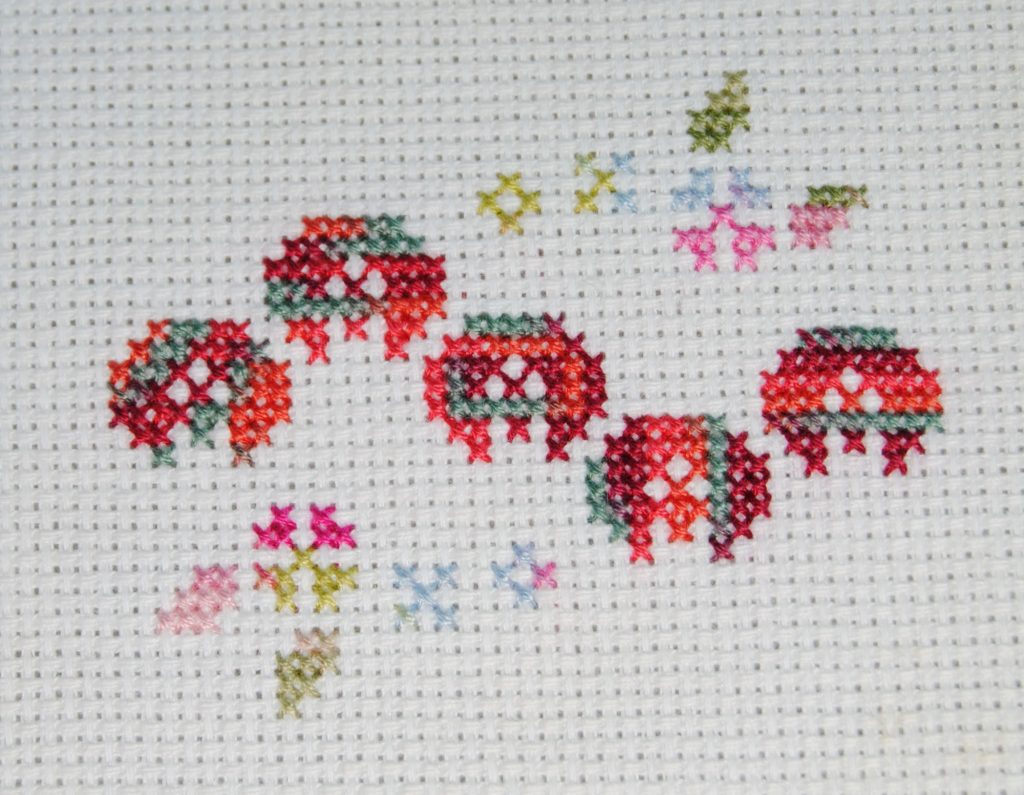
To keep things as ‘scientific’ as possible I pulled two very similar lengths of thread, and split each of them into 3 bundles of 2 and stitched all 5 using basically the same piece of thread. the same color changes. But they all came out very different.
For the flowers I started at the smaller one and kinda worked in a circle towards the larger ones. For the leaves I just stitched top to bottom.
Then I did the same thing with the less colorful DMC Variegations
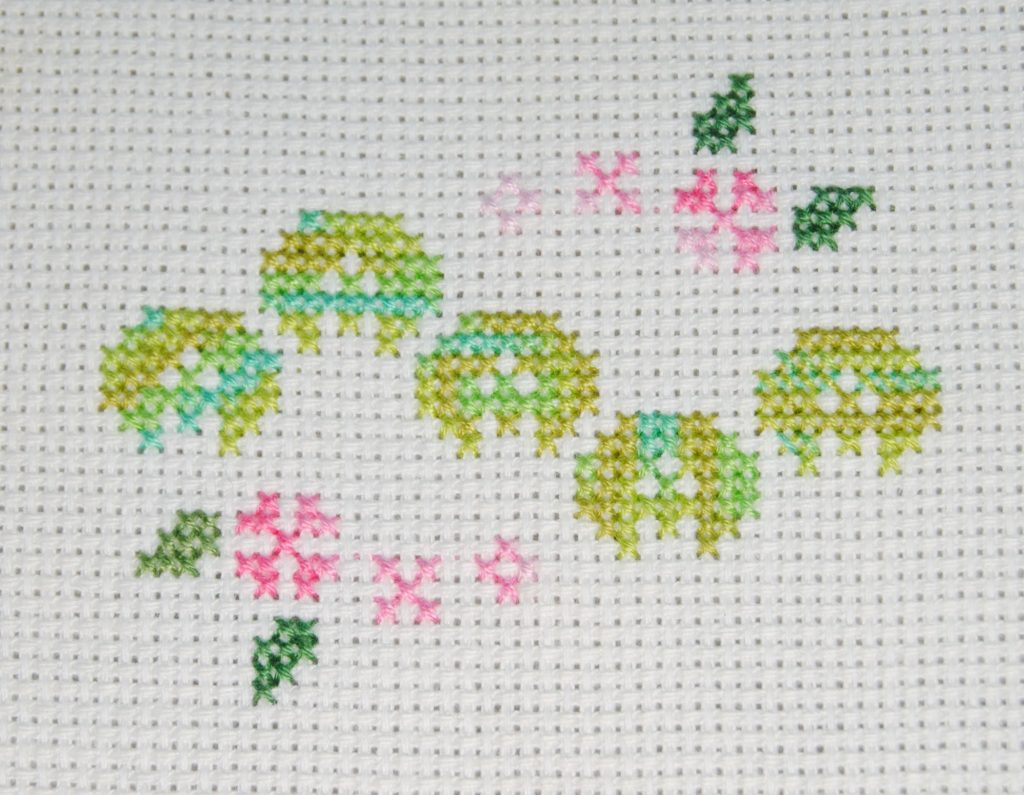
And finally with the more subtle original DMC Variegated threads. Much harder to tell the difference with these!
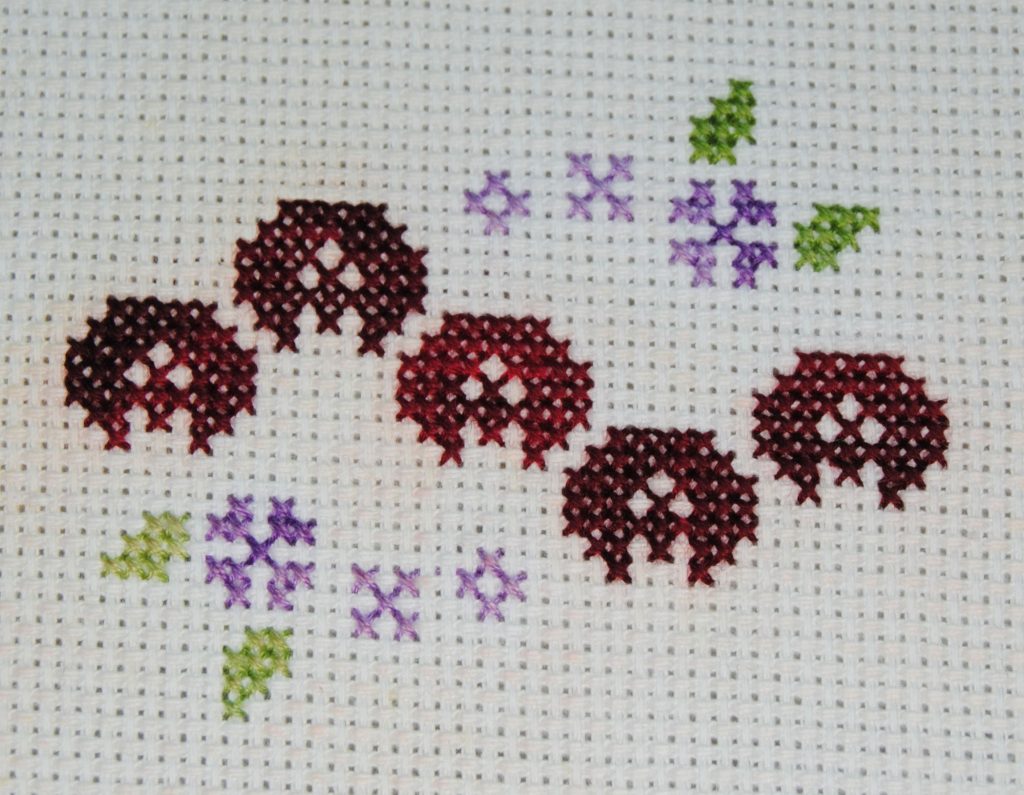
…and yes the red DID bleed when I washed it. Why do you ask? I did warn you about that earlier, right? Apparently I don’t learn from my own advice. Do as I say, not as I do.
Mix things up for cool effects!
Whichever style you pick, you don’t have to stitch everything in the same direction! Use the different styles to your advantage and make some super cool effects.
For example, this pattern by Sal (aka TheRetroStitcher) was stitched using some off brand rainbow thread he found. By stitching the different sections at different angles it really draws your eyes to different sections of the pattern.
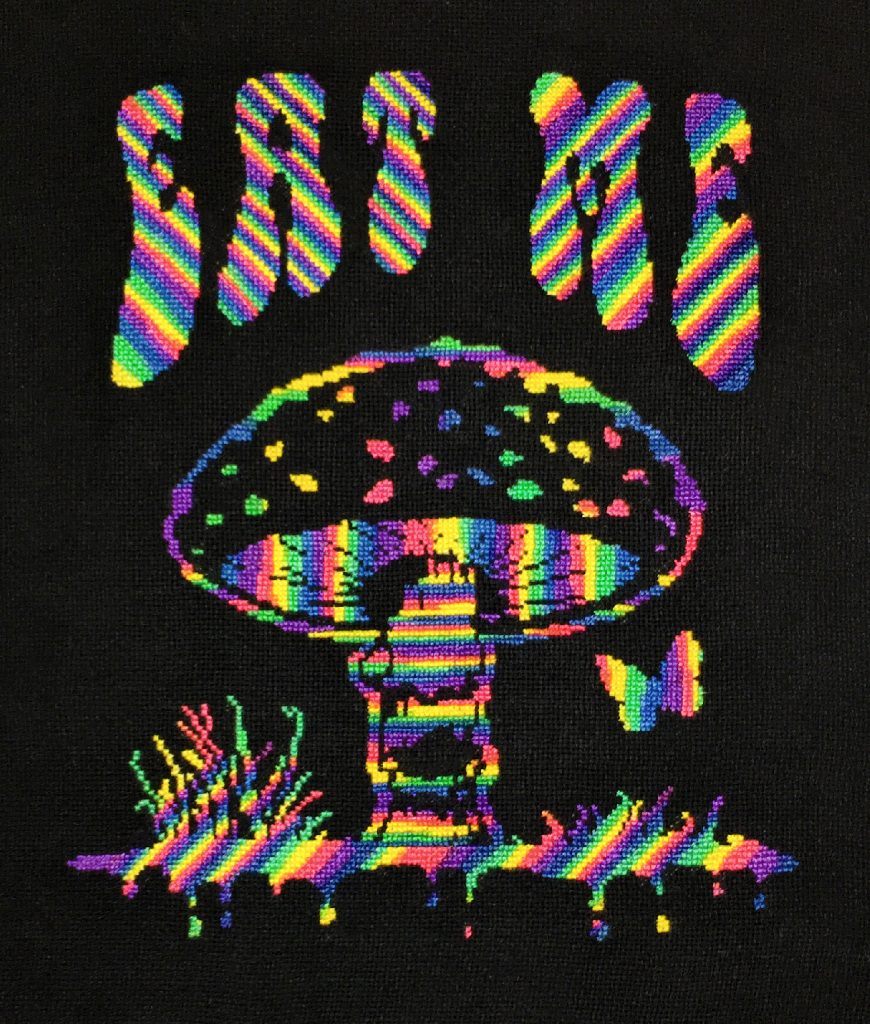
Don’t be afraid to experiment! If you want to try a similar rainbow effect, Cosmo 9016 or Threadworx “Bradley’s Balloons” would be a great substitute.
Avoiding Loop Starts – Loop knot instead
If you’re a big fan of the loop start method, you may want to avoid it. Unless you’re really paying attention to the gradient and somehow getting the ends to the same color, it will again create a patchy mismatched stitch. But that might actually look really awesome depending on what you’re stitching! Kinda like using blends, except the blends change as you go. I really should try that sometime.
Regardless, there’s a bunch of different methods to start your thread. When all else fails you could make a small knot at the end of your two strands and loop through that.
Opposing strands – Don’t match up your 2 strands.
As mentioned with the loop start, you might actually want to make your thread all mismatched and colorful. A way to achieve this without loop starting is simply to pull your 2 strands as normal, and then flip one of them around.
You’ll want to do some tests to see how this turns out, but it can definitely make for an interesting texture!
Controlling the color by cutting specific thread lengths
Some variegated threads don’t change colors very often and you may want to break up your thread lengths. If you’ve ben going on one color for what feels like too long, cut it and flip it over to start from the other end of your thread. Or cut a new length that starts with the color you want.
This is especially helpful for when stitching small objects, or when you want certain colors to go in certain sections of your stitch.
Alternating lengths to match up colors.
Speaking of cutting lengths, one trick I like to use is to alternate which end I work from. Okay, so you’ve cut your first length of thread right? And you’re gonna pull two strands to work with.
Well chances are each end of your thread is gonna be a different color. I recommend starting with the side opposite of the one that’s now the end of your skein or bobbin.
Then once that’s done, pull off your second two strands and stitch starting with the side that is the same as the end of one you just finished. And then next time in the other direction. Which will leave you with the end that matches the skein.
Gosh that’s hard to explain. I hope that makes some sort of sense. But basically it’s just a technique to keep your color consistent throughout even when having to cut new lengths of thread.
Bonus Butt
Anyway, that’s all the advice I have for you today when it comes to variegated threads. For fun, I leave you with the backside of one of the Metroid pieces I did for this article.
Check out how different the back looks depending what direction you stitch in, too!
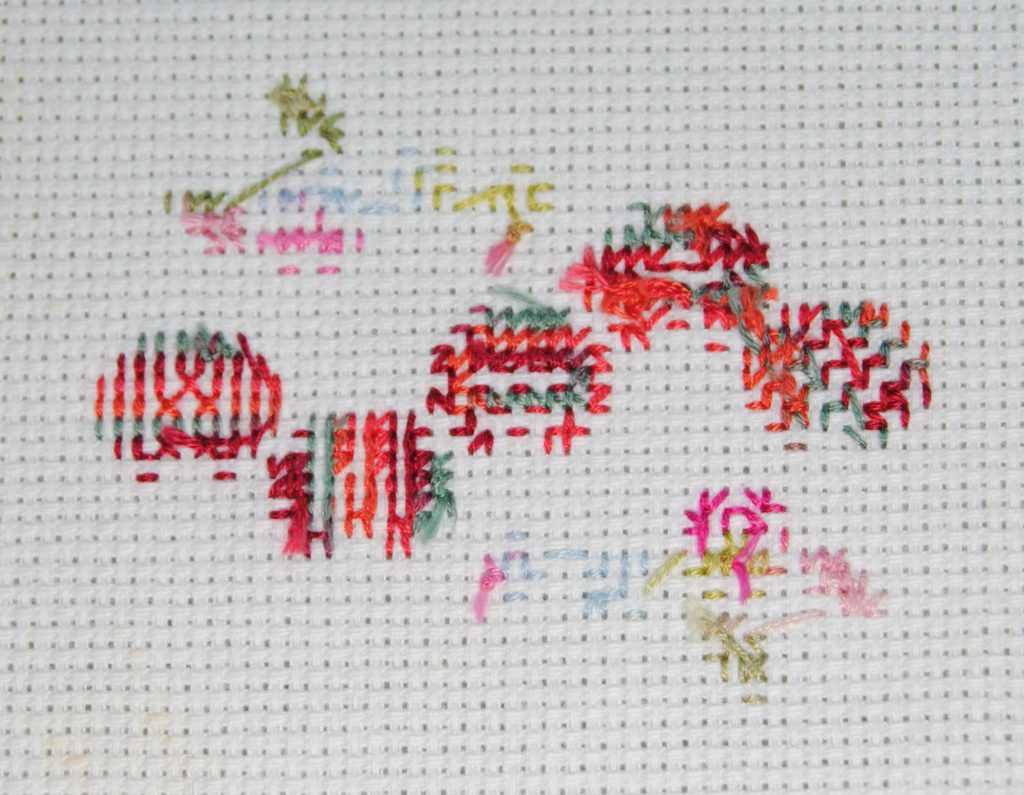
Now get out there and create some beautiful variegated stitches!

